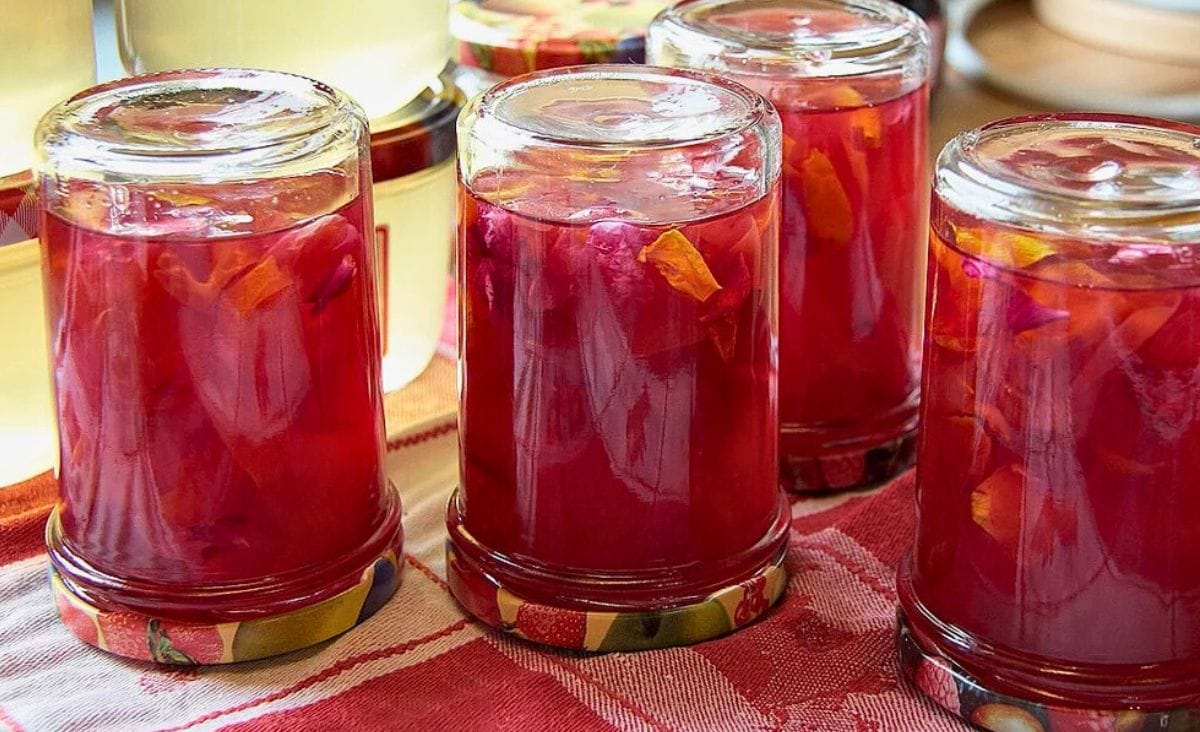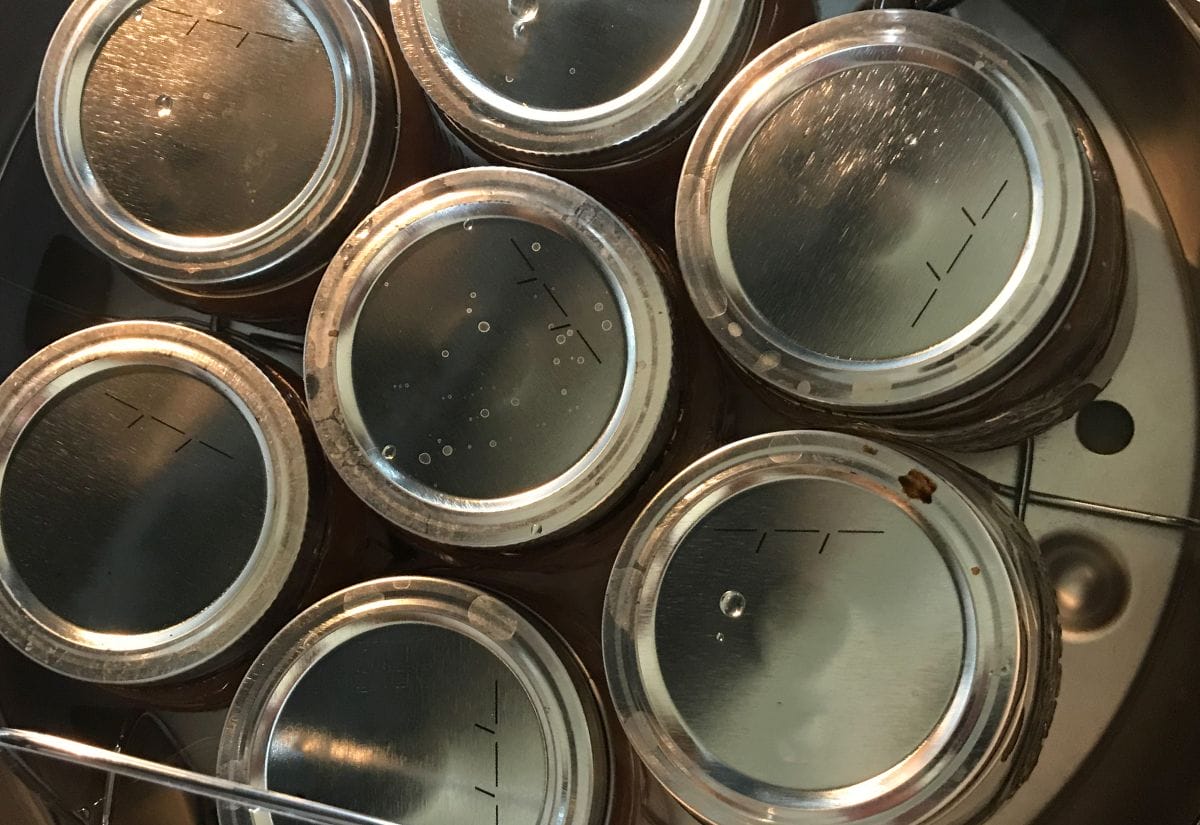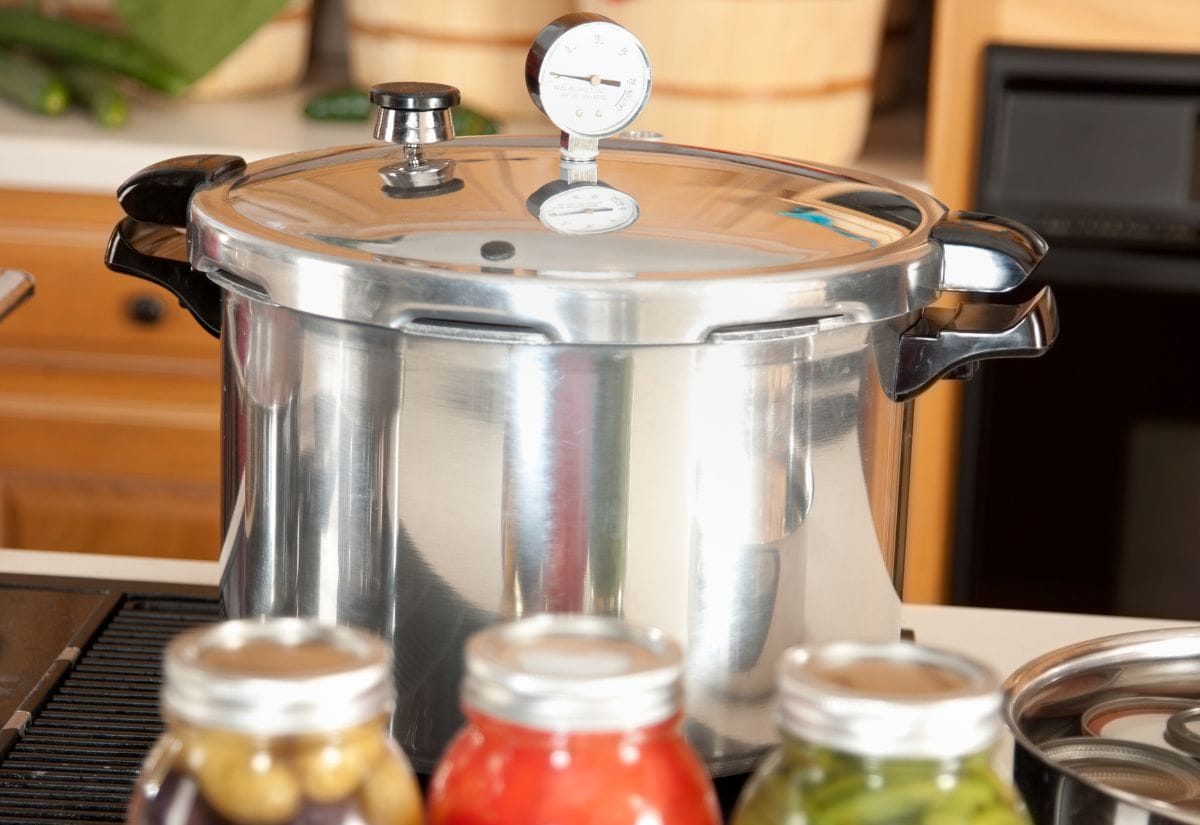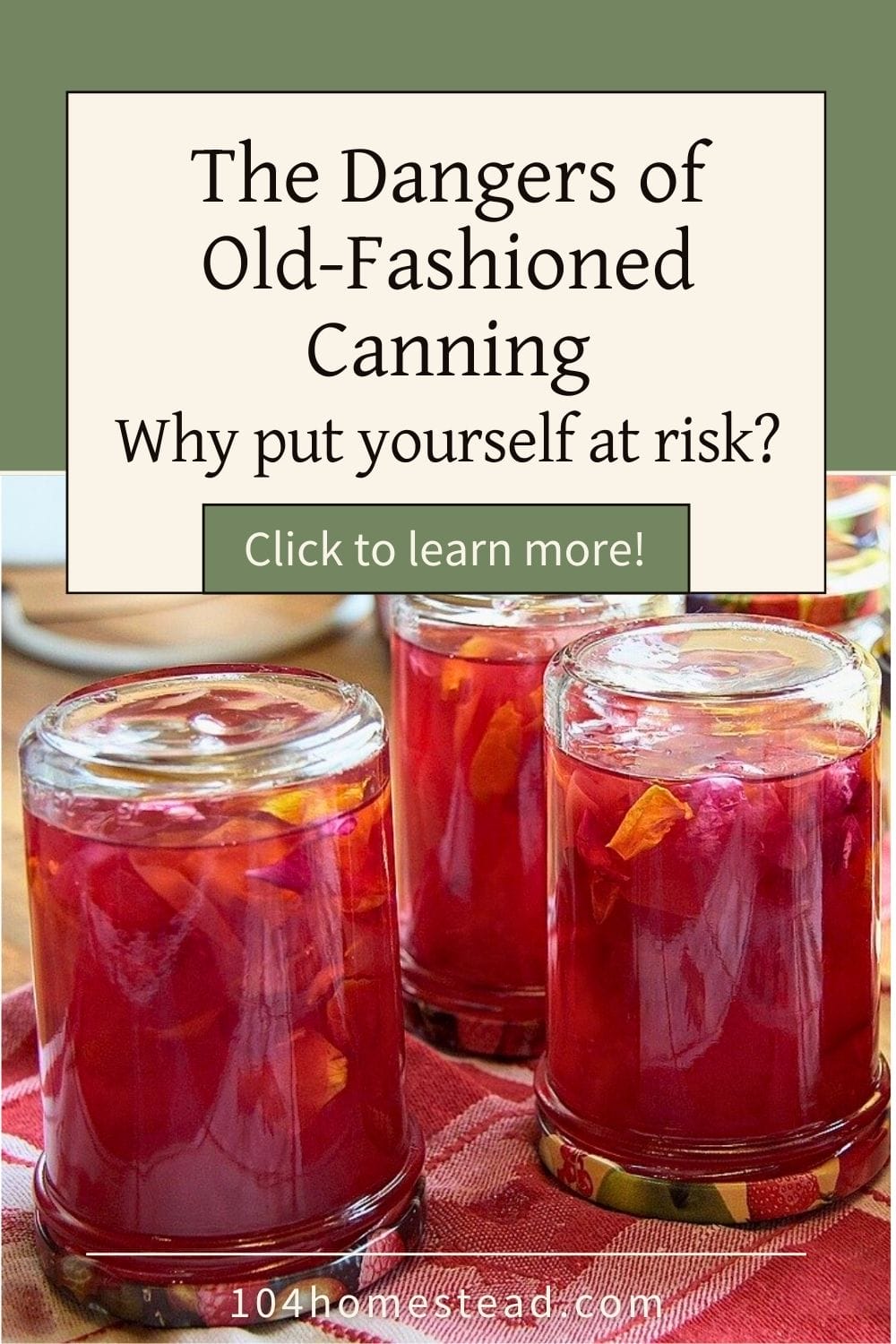Inversion Canning: Why “Old-Fashioned” Methods Aren’t Safe
Learn why inversion canning and other old-fashioned methods are unsafe. Discover modern, safe canning practices to protect your food and health.

Have you ever heard of flipping jars to can your homemade jelly or jam? Maybe it’s a technique passed down through your family, or perhaps you stumbled upon it in an old cookbook. It sounds simple, even charmingly old-fashioned, but it’s far from safe.
Inversion canning, also known as the “flip jar method” or “open kettle canning,” is an outdated technique that can put your health at serious risk. While it may have been common in grandma’s day, modern research shows it’s not safe. In this post, we’ll break down why inversion canning is dangerous, explain the science behind safe food preservation, and share expert-backed resources to keep your canning adventures safe and successful.
What Is Inversion Canning?
Inversion canning is a method where hot food (often jams, jellies, or sauces) is poured into jars, the lids are secured, and the jars are flipped upside down for several minutes. The idea is that the heat from the food creates a seal as the jar cools. While this method might cause the lids to “pop,” creating the illusion of a proper seal, it does not provide the necessary heat or sterilization to ensure food safety.
Why Is Inversion Canning Dangerous?
According to the Ball Blue Book: Guide to Preserving and reputable sources like the National Center for Home Food Preservation, inversion canning is unsafe for several reasons:
Insufficient Heat for Sterilization
- The temperatures reached during the cooking and jar-flipping process are not high enough to kill harmful bacteria, mold, or spores.
- Without proper sterilization, foodborne illnesses like botulism can occur, even if the jar appears sealed.
Contamination During Transfer
As food moves from the pot to the jars, it can be exposed to airborne bacteria or microorganisms that survive in improperly sealed environments.
False Sense of Security
Just because the lid “pops” doesn’t mean the contents are safe. As Penn State Extension explains:
“The time saved with open kettle canning is not worth the risk of food spoilage or illness.”
The Science of Safe Canning
To safely preserve food, it’s essential to follow methods that meet USDA guidelines. These guidelines recommend either:
Water Bath Canning
Use water bath canning for high-acid foods like jams, jellies, and pickles. Boiling jars in water ensures they reach temperatures high enough to kill harmful microorganisms.

Pressure Canning
Use pressure canning for low-acid foods like vegetables and meats. Pressure canners heat jars to 240°F, destroying botulinum spores and other dangerous bacteria.

Modern canning lids, as noted by Ball, are designed to vent during the heat process. Inversion canning doesn’t allow for proper venting and can result in failed seals.
Other Dangerous Canning Techniques to Avoid
While inversion canning might be the focus here, other outdated methods also pose risks:
Paraffin Wax Sealing: Using wax to seal jams and jellies leaves air pockets, increasing the chance of mold growth.
Steam Canning: Unless specific USDA-approved steam canners are used, this method doesn’t generate enough heat to sterilize food properly.
*** in 2023 the USDA and National Center for Home Food Preservation approved the use of steam canning with high acid foods, such as pickles, salsa, fruit, jams and jellies, and tomatoes (with added lemon juice).
“Home canners may use an atmospheric steam canner in place of a boiling water bath canner for high-acid foods, using a tested recipe.”
Aspirin Preservation: Adding aspirin to low-acid foods in place of pressure canning is unsafe and ineffective.
Oven Canning: Exposing jars to dry heat in an oven risks explosion and uneven heating, making it impossible to guarantee food safety.
The Risks of Mold in Jams & Jellies
Inversion canning is most commonly used for jams and jellies, but these are the foods most susceptible to mold growth. Why does this matter?
- Mold Lowers pH Levels: When mold grows, it can reduce the acidity of the food, creating an environment where botulinum toxin can thrive.
- Increased Risk of Botulism: Even a small amount of improperly preserved jam can lead to serious illness.
Canning Safety FAQs
Expert Advice on Safe Canning Practices
Since the 1980s, community extension offices have warned against inversion canning and similar outdated methods. The National Center for Home Food Preservation and the Ball Blue Book are trusted resources for modern, science-based canning techniques.
Follow the latest guidelines from reputable sources to ensure your food is safe for consumption. When in doubt, consult your local cooperative extension office—they’re there to help!
Say goodbye to dangerous canning methods—save this post for safe and effective food preservation tips

While some old-fashioned techniques might seem charming, inversion canning isn’t one of them. The risks far outweigh the convenience. By following modern, science-backed canning practices, you can preserve your jams, jellies, and other foods safely and confidently.
If you’re ready to dive into safe canning techniques, explore some beginner-friendly water bath canning tips to get started. For those looking to reduce sugar in their preserves, there are ways to make delicious jams without added sugar or honey. And if you’re in the mood for something fruity, try making a mixed berry jam that’s bursting with flavor from raspberries, strawberries, and blueberries.
What’s your go-to canning method? Share your tips and stories in the comments below—I’d love to hear about your experiences!





Exactly, I was thinking the same thing.. but you’ll never convince a scaredy cat canner of that! lol
Steam canning was approved in 2015! https://nchfp.uga.edu/publications/nchfp/factsheets/steam_canners.html
Isn’t it that mold raises the pH (lowering the acidity), making it more alkaline, which allows mold to grow? I’ve always read that an acidic environment inhibits both mold and botulism.
https://nchfp.uga.edu/how/general/ensuring_safe_canned_foods.html
I’ve never made jam any other way besides inverting. I just made two batches. Can they be covered and boiled after they are cooled? Cause now you have me nervous!
I only do the inversion canning with BlackBerry jelly. I don’t use pectin. I have not had any problems.
I remember instructions in the pectin box that had you invert the jars for 5 minutes AFTER the water bath.
The powdered pectin I use from save a lot grocery store states in it’s directions for jelly and jams to invert jar 5 minutes . This is why it’s confusing
Are you in the US? I haven’t seen those instructions on a box for years.
“Ball Blue Book: Guide to Preserving” and “So Easy to Preserve” published by Cooperative Extension, The University of Georgia, are the two books I depend on for safe food preserving. They are both required reference material for the Hawaii Master Food Preservers program. They are filled with dependable techniques that have been tested and proven safe, even here on Kauaʻi, where bacteria and molds have a field day. We are required to maintain at most a 3.5 pH balance when using the hot water bath technique. Be safe. Get some testing strips and make sure you acid level is high enough for your area! Invest in a high quality pressure canner for the rest of your canning. This is NOT a place to try and save money. Give up something else if you have to. My grandmother planned on throwing away a certain amount of “bad” tomatoes sheʻd canned each season. Grandma didnʻt live in a time of super bacteria and resistant organisms. We do! Your familyʻs lives depend on your commitment to detail and safety. Form good habits and safe canning is a snap.
I recently saw two methods used, that I hadn’t seen before, in YouTube videos.
The first was lemon curd – they sanitized and heated the jars, poured in the curd, then put on the lids and rings. They then left the jars on the counter to cool and ‘seal’. He did say to refrigerate the jars, but also that they were good up until 7-9 months later?
The second was nectarines in light syrup. The made the syrup (1 cup sugar to 3 cups water), brought it to boil, added the fruit andboiled until tender, then ladelled them into sterilized and heated jars. They removed any bubbles, then filled the jars to overflow it syrup! They put the sterilized lids on, allowing the syrup to overflow, then set then to cool and seal – no water bath or pressure canner. She said to remove the rings and wash and dry the jars after 2 hours, then to put in the pantry.
I was very interested – and concerned – as both these methods were demonstrated on a TV show that had been loaded onto youtube.
Would they be safe?
The first one doesn’t concern me too much. If it’s refrigerated, it should be fine. The second one is one of the old school methods that MAY be safe, but it’s not the safest option. People who should be using those techniques are people who really know what they are doing. If things are heated to the proper temperatures, bacteria can easily grow. I’d play it safe myself with water bath or pressure canning.
I have a few recently published cookbooks with recipes for jam and jelly made with wax seals or inversion canning. It makes my skin crawl! I can because I want to feed my family healthy food, not give then botulism!
Steam canning is considered safe now. The University of Wisconsin received a grant from the USDA and NCHFP to test atmospheric steam canning and was the process was approved the end of June 2015 for canning of high acid foods.
Do you have a link for that? I heard rumor, but I haven’t been able to find information online about it.
steam canning approval link
http://www.simplycanning.com/steam-canning.html
I have a copy of Putting Food By from 1971 (I think – very early 1970s, anyway), and THEY state that food storage specialists have been warning against open kettle canning for decades. My grandparents had a pressure canner in the 1940s and THEY knew not to do this stuff because my grandmother read all of the pamphlets and books that the government happily handed out.
So essentially, people who are still doing Open Kettle Canning are doing something that was known to be unsafe seventy years ago.
And yet, they are still alive to keep doing it.
How would you know they never got ill unless it’s friends/family? I myself came across some of my Grams questionable jars in the 80’s; thankful I didn’t eat them as some had mold when opened…also if you plan on selling as a cottage business, you have to follow FDA rules for current/proper canning methods